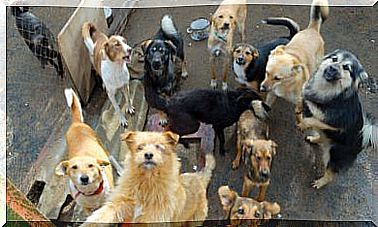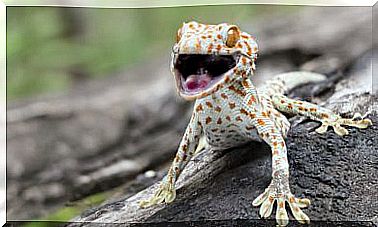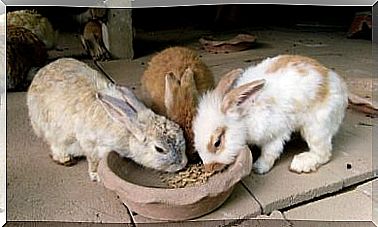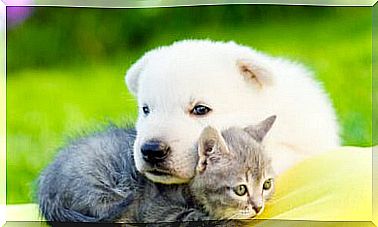The Role Of The Queen Ant In The Colonies
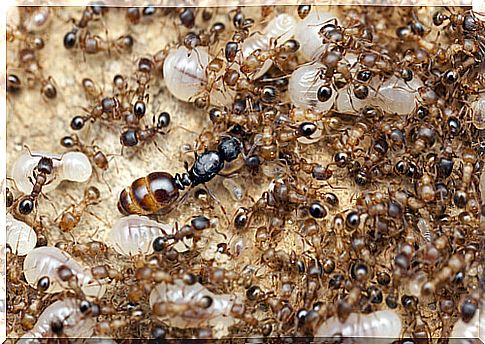
Ants are one of the few animals that live in an eusocial society. One of the characteristics of a society is the presence of a queen who leads all the other members of the community. Next, we will see what the role of the queen ant is and why its existence is essential for the colony.
What is eusociety?
Eusociety is the most complex form of social organization observed in the animal kingdom. Its structure is based on the recognition of castes, where each individual fulfills his previously determined role for the harmonious functioning of his community.
In general, eusocial societies are usually associated with some species of insects, such as ants, bees and wasps. However, the naked mole rat (mammal) and some species of crustaceans are also organized under eusocieties.
Eusocial societies are organized as a kind of matriarchy; in these colonies the queens always occupy the central leadership role. There is also an infertile caste that is dedicated to grassroots work, which is often called the ‘worker caste’.
But one of the typical characteristics of eusociety in ants is the existence of an intermediate caste, in which the soldier ants are found.
How are ants structured in an eusociety?
To survive, the ants must build a shelter, popularly known as an anthill, where they will develop their community. An anthill can take up to four years to be fully built and with all its castes developed.
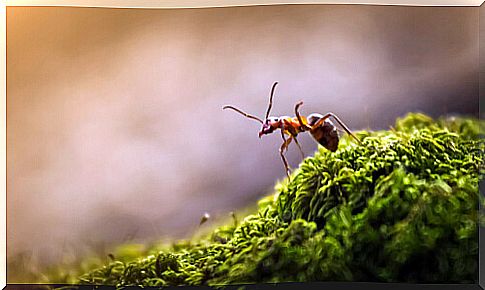
Inside each anthill, an eusocial society divided into three castes will be formed: the queen, the workers and the soldiers. Each of these individuals will carry out a certain work, on the perfect execution of which depends the general welfare of the colony.
Thanks to this organization, the anthill functions as an organism, in which each piece must exercise its function for the integrity of the whole.
Now we will see the functions of each breed within the dynamic structure of an anthill. In this way, we can better understand the specific role of the queen ant.
The queen ant: great mother and leader of the anthill
In eusocial societies there is always the leading figure of the ‘queen’, who is the great mother and leader of her colony. Usually each community has only one queen, as is the case with bees and wasps.
However, in many species of ants it is observed that several queens share the same anthill: they make up a polygynous colony. The queen ant is easy to identify as it is much larger and more robust than the other insects in the community.
Queen ants are the only fertile females in the ant hills; from them all the other individuals of the colony are born. Their most important function is to pass on their genetic material to their descendants, to ensure that the species remains strong and fit to survive.
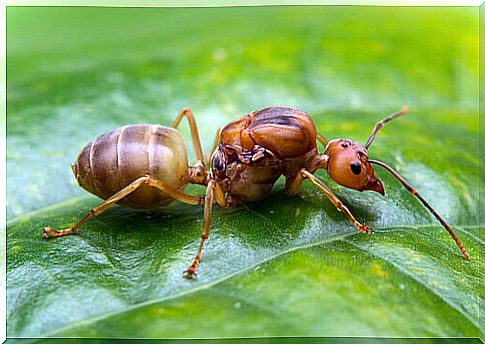
Another essential role of the queen ant is to ensure that her caste is not left empty, as this would lead to the extermination of her colony. A queen ant can live up to 15 years, while workers only live a few days or weeks.
Before dying, the queen ant lays special eggs that are mediated by certain hormones. Larvae will be born from these that the workers will take care of and feed in a special way so that, when they reach maturity, they will fight to define who will be the new queen ant.
Functions of worker and soldier ants
The workers are the infertile females who are responsible for the basic work in the anthill. Among its main functions are the collection of food, the rearing of the larvae and the daily keeping of the anthill. These are the smallest ants in the community, but they can carry up to 40 times their own body weight.
In turn, the soldier ants are dedicated to protecting and defending the anthill from all kinds of threats. It is an intermediate class, in relation to both its size and its social function in the colony.
As the anthill functions as an organism, the survival of its members depends on the correct functioning of its structure, so all individuals are essential. Although the queen ant is the noblest caste, its existence also depends on the workers and soldiers.


